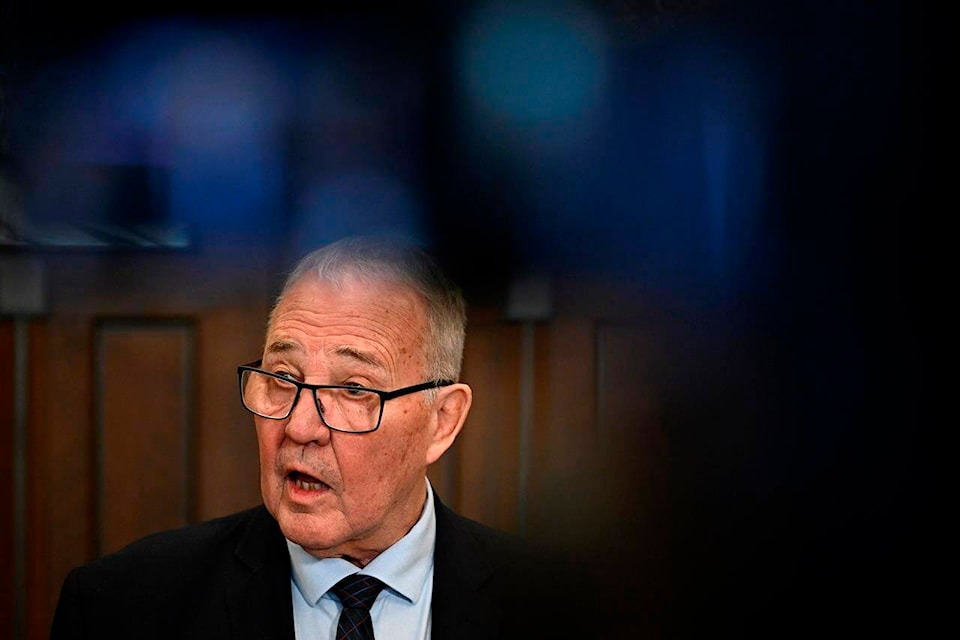Canada’s military will take a bigger role in the North over the next two decades as climate change and increasingly aggressive foes threaten Arctic sovereignty, says a new defence policy document released Monday.
Prime Minister Justin Trudeau was flanked by Defence Minister Bill Blair, Veterans Affairs Minister Ginette Petitpas-Taylor and Finance Minister Chrystia Freeland as he announced the policy at Canadian Forces Base Trenton.
“Climate change is rapidly reshaping Canada and reshaping our North,†Trudeau said.
The government is planning to buy new vehicles adapted to the frozen conditions in the North, along with building an Arctic satellite ground station and setting up northern operations hubs.
In addition to air and land, Canada needs to be prepared to defend itself under the ice, the document said.
Back in 2021, the Royal Canadian Navy launched a long-anticipated push to replace the country’s four Victoria-class submarines, which will reach the end of their lifespan in the mid-2030s.
The updated defence policy calls for the purchase of conventionally powered submarines — but the prime minister left the door open Monday to a nuclear-powered option.
“That is certainly what we will be looking at, as to what type of submarines are most appropriate for Canada’s responsibility in protecting the longest coastline in the world, and certainly the longest Arctic coastline in the world,†he said.
Along with that, Trudeau said Canada is exploring the possibility of joining the second phase of AUKUS, the U.S.-led alliance with the United Kingdom and Australia.
The initial pillar of the alliance was focused on developing nuclear-powered submarines for Australia. Its second phase is focused on advanced capabilities like quantum computing, AI and cyber technologies.
The Canadian Armed Forces is setting up a new Cyber Command, which will see the military work with the Communications Security Establishment.
In all, the “Our North, Strong and Free†policy will boost military spending to 1.76 per cent of GDP by 2030.
That includes setting aside another $8.1 billion over the next five years and spending $73 billion by 2044.
It allocates $9.5billion over 20 years to start ramping up production of artillery ammunition, $307 million for early-warning aircraft and $2.7 billion to buy long-range missiles. It projects that annual defence spending will have doubled between 2016 to 2026.
All of that still leaves Canada shy of the minimum 2 per cent the NATO allies agreed to spend last July. NATO’s latest figures show Canada is spending 1.33 per cent of GDP on defence and is lagging behind a growing number of countries.
But the cost of buying those new submarines is not yet calculated, Trudeau said, noting the total spend will increase.
The U.S. ambassador to Canada, David Cohen, said the policy “appears to articulate a substantial down payment toward Canada’s pledge to meet its NATO commitment.â€
The Liberals first promised an updated defence policy more than two years ago, in the wake of Russia’s full-scale invasion of Ukraine.
It comes at a time when persistent recruitment and retention problems that have plunged the Armed Forces into a personnel crisis, with more than 16,000 positions unfilled. Another 10,000 troops lack adequate training to deploy.
“Over the past number of years, more people have left than have joined the Canadian Armed Forces, and we’ve done a pretty deep dive into why that’s happening,†Blair said.
The government has pinpointed some of the factors that are keeping Canadians from donning a military uniform: “The burden of frequent postings, a lack of spousal employment opportunities, limited access to health and childcare, an oversaturated housing market, and high costs associated with relocation.â€
The government plans to launch a Canadian Armed Forces housing strategy, at a cost of $295 million over 20 years, and to spend $100 million over five years to improve access to child care for military members as a way to tackle those issues.
It’s also pledging to reform recruitment processes and speed them up, while examining ways to ease some medical requirements if possible.
In a statement, the federal Conservatives called the plan desperate and criticized the plan to spend the bulk of the money in later years.
“Trudeau is once again kicking the can down the road by committing most of the defence spending in today’s announcement until after the next election,†defence critic James Bezan said in a statement.
Defence officials say they’re reviewing defence procurement, a long-standing issue, with the aim of streamlining it. The policy notes that during consultations, the defence industry said it needed to reset its relationship with government.
“Industry and experts also called for faster and more flexible defence procurement, secure supply chains, and investments to modernize defence infrastructure,†the document said.
The government is also committing to reviewing its defence policy every four years.
This report by The Canadian Press was first published April 8, 2024.
Sarah Ritchie, The Canadian Press



